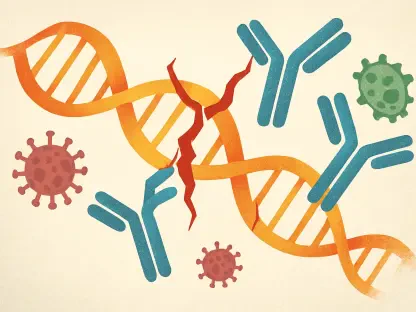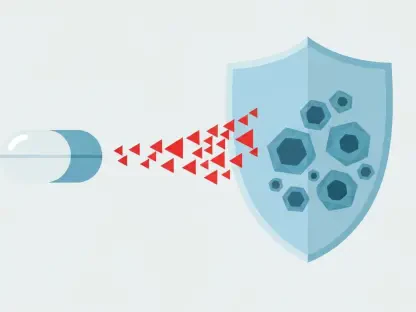Cryptococcus neoformans infections often pose a significant threat to individuals with weakened immune systems, such as those with HIV/AIDS or organ transplant recipients. These infections can lead to cryptococcosis, a severe condition that initially affects the lungs and may spread to the brain, presenting life-threatening complications. Given the serious risks, researchers have been aiming to prevent the progression of these deadly infections. In a recent study conducted by Kirsten Nielsen’s laboratory, scientists have worked to enhance treatment efficacy for those already afflicted by the infection, shedding light on potential breakthroughs in predictive diagnostics and treatment strategies.
Findings from the Laboratory Study
Examining Virulence Across Strains
Kirsten Nielsen’s team dedicated six years to investigating the virulence of 38 clinical isolates from various Cryptococcus strains. By sequencing the complete genome of each strain, researchers aimed to identify not only the genes but also the specific gene alleles that impact the severity of the disease. Using a mouse model that closely mimics human disease, this extensive genetic analysis allowed the team to pinpoint genes linked to different levels of disease intensity. Understanding these biological mechanisms and the role of diverse gene alleles is essential for creating targeted treatments that can combat the infection more effectively.
The study underscored the significance of single nucleotide polymorphisms (SNPs) in the genetic makeup of the Cryptococcus strains. These SNPs were found to be associated with strain-specific differences in virulence. This discovery offers a pathway to more precise diagnostic tools and treatment methodologies. By focusing on gene functions and genetic variations influencing disease progression, researchers can work towards developing therapies that are tailored to the genetic profile of individual infections, potentially improving treatment outcomes for patients suffering from cryptococcosis.
Genetic Sequencing and Disease Outcomes
The comprehensive sequencing process undertaken by Nielsen’s lab marked a monumental step in understanding Cryptococcus infections. By sequencing the entire genomes of these fungal strains, researchers were able to map out genetic variations that correspond to differing disease severities in patients. This intricate genetic landscape provides a clearer picture of how certain alleles can drive more aggressive forms of the disease, cluing researchers into potential genetic markers that can serve as red flags for severe infections. This insight is crucial for the medical community as it paves the way for early diagnostic predictions, permitting preemptive measures and personalized treatment plans.
With these genetic insights, the study set the stage for further research into diagnostic tests designed to predict disease severity based on identified genetic markers. When gene alleles linked to high virulence are understood, medical practitioners can anticipate the potential severity of an infection and customize treatment plans accordingly. This anticipatory approach could drastically improve patient outcomes by allowing for more aggressive treatments in cases predisposed to severe disease and more conservative therapies for those less at risk.
Focus on Diagnostic Tools and Treatment
Developing Predictive Diagnostic Techniques
With the identification of strain-specific gene alleles associated with severe disease outcomes, subsequent research will likely concentrate on translating these genetic findings into practical diagnostic tools. By developing robust diagnostic tests, healthcare professionals can better predict the progression and potential severity of Cryptococcus infections in patients. Diagnostic tools that can identify these high-risk alleles early could revolutionize the approach to treatment, enabling a more personalized healthcare experience tailored to an individual’s specific genetic profile.
Collaborative efforts in this area emphasize the One Health philosophy, which considers the interconnectedness of human, animal, and environmental health. Nielsen’s continuation of research at Virginia Tech, supported by significant NIH funding, highlights the commitment to advancing these goals. Such collaborations are essential for pooling expertise and resources, propelling the development of innovative diagnostic techniques. With accurate predictive diagnostics, clinicians can more effectively monitor at-risk patients and implement tailored interventions to mitigate the risk of severe cryptococcosis.
Towards Improved Therapies
Understanding gene functions and the influence of genetic variations also holds promise for advancing therapeutic avenues. By delineating how specific genetic markers influence disease progression, researchers can design more targeted and effective therapies. This targeted approach minimizes the trial-and-error process that has often characterized the treatment of Cryptococcus infections, thus leading to faster recoveries and reduced healthcare costs.
Targeted therapies especially benefit immunocompromised patients for whom general treatments may not be as effective. With personalized treatments, the likelihood of combating aggressive infections rises significantly. This research also highlights the importance of integrating veterinary and environmental studies into the understanding of human health, reiterating One Health’s comprehensive implications toward tackling cryptococcal infections from every angle. Together, these insights could revolutionize treatment paradigms, promising a future where fewer patients face the grievous complications of untreated or poorly managed cryptococcal infections.
A Step Towards Holistic Solutions
Integrating Comprehensive Health Insights
The holistic approach embodied by the One Health model underscores the interconnectedness of various health domains, suggesting that an effective response to Cryptococcus infections must encompass a spectrum of considerations. This includes not just human health implications but also environmental and animal health dynamics that could influence the prevalence and spread of infections. The progression from identifying genetic markers to developing targeted diagnostics and treatment plans represents an integrated effort to tackle cryptococcosis on all fronts.
Cryptococcus infections have been an underestimated threat to susceptible populations, emphasizing the need for advanced strategies to mitigate their impact. The insights yielded by Nielsen’s research help chart a course toward more meticulous and comprehensive methodologies for handling these infections. The focus on inclusive health perspectives promotes broader understanding and awareness, paving the way for more resilient healthcare frameworks that can address similar infectious disease challenges in the future.
Future Prospects and Research Directions
Cryptococcus neoformans infections are a serious concern for individuals with compromised immune systems, such as those living with HIV/AIDS or those who have received organ transplants. These infections can lead to cryptococcosis, a severe disease that typically begins in the lungs and has the potential to spread to the brain, resulting in possibly fatal complications. Due to the high risks associated with these infections, researchers are focusing on preventing the progression of this life-threatening condition. In an advancement by Kirsten Nielsen’s laboratory, a recent study has sought to improve treatment efficacy for patients already battling the infection. The research highlights new potential breakthroughs in both predictive diagnostics and treatment strategies, demonstrating the promise of enhanced care for vulnerable individuals. Given the critical nature of these infections, further exploration and innovation in this area could significantly impact patient outcomes and offer hope to those affected by Cryptococcus neoformans.









